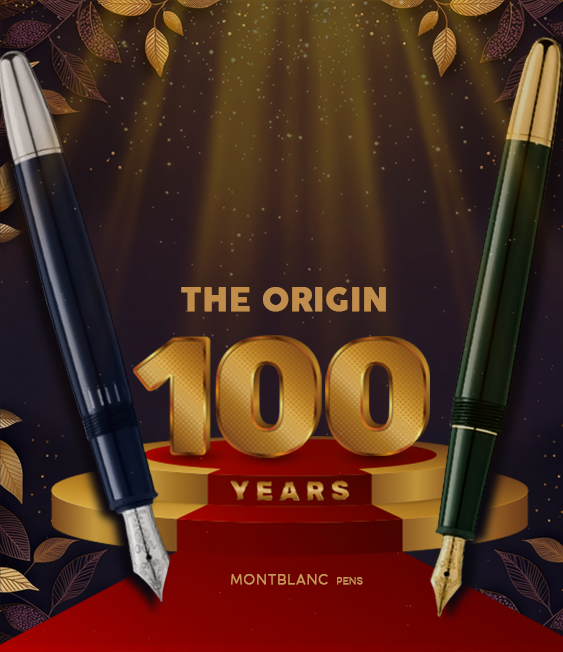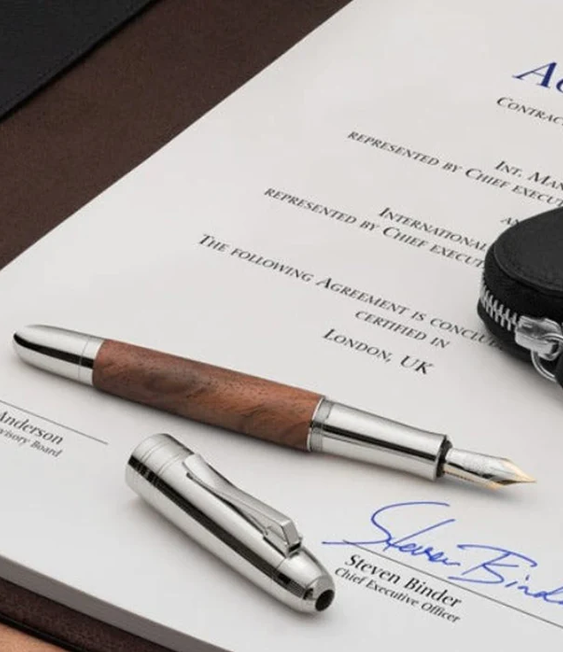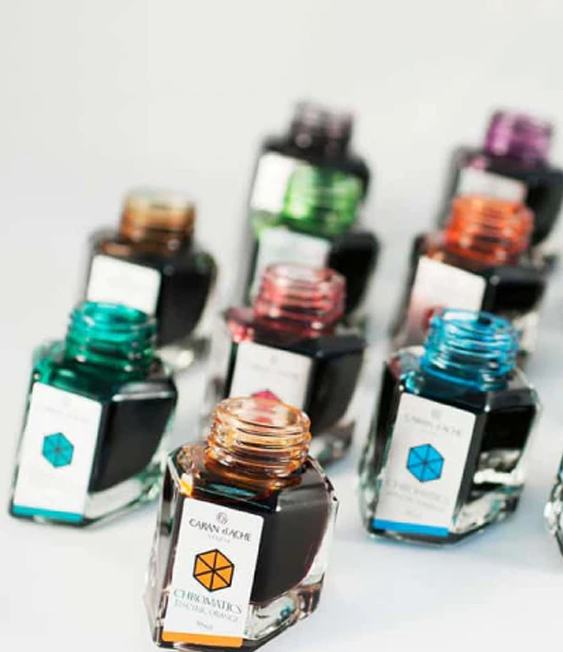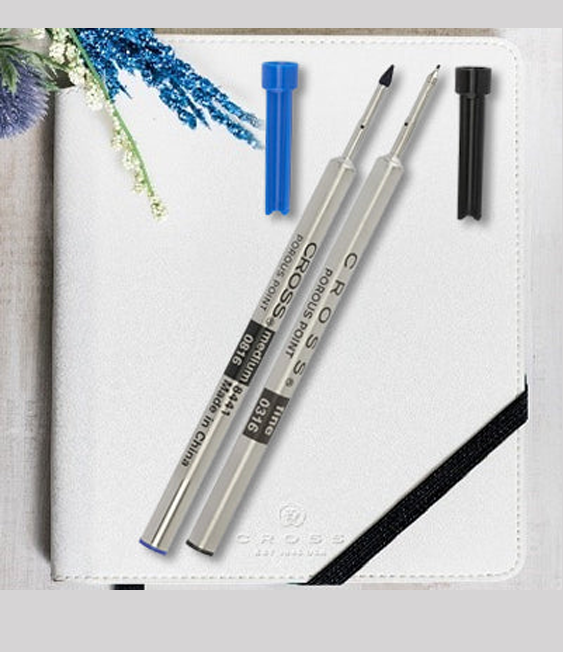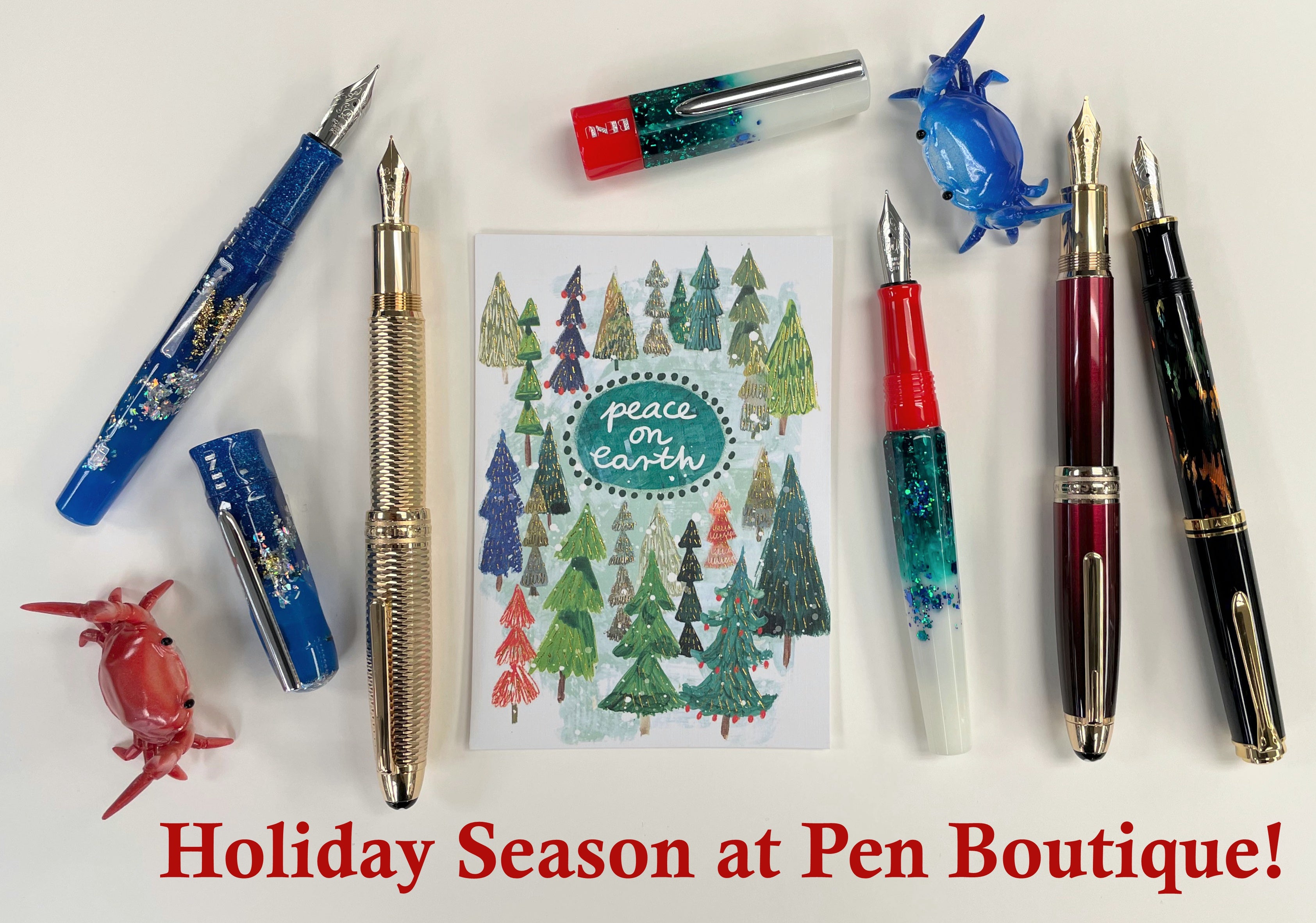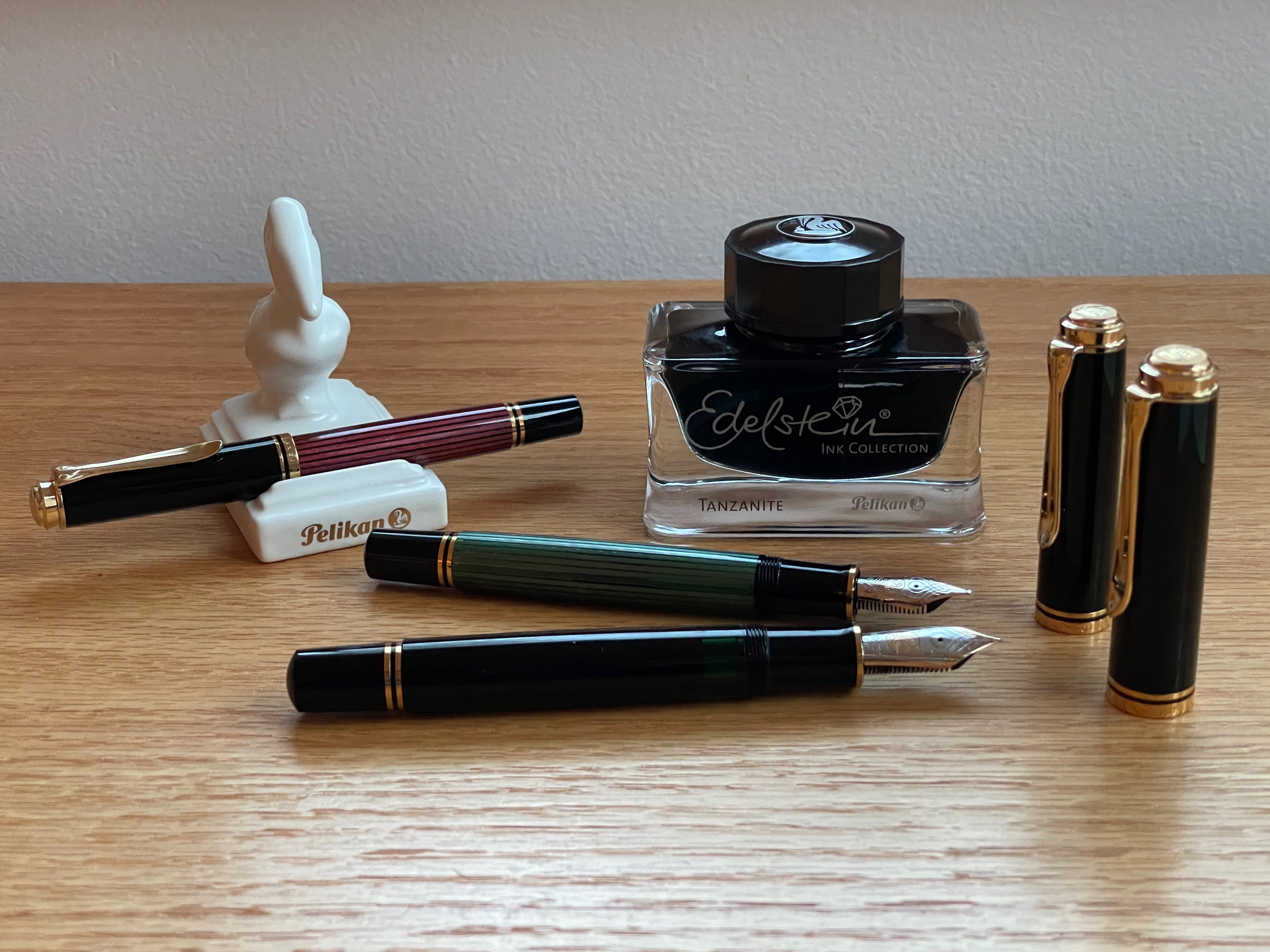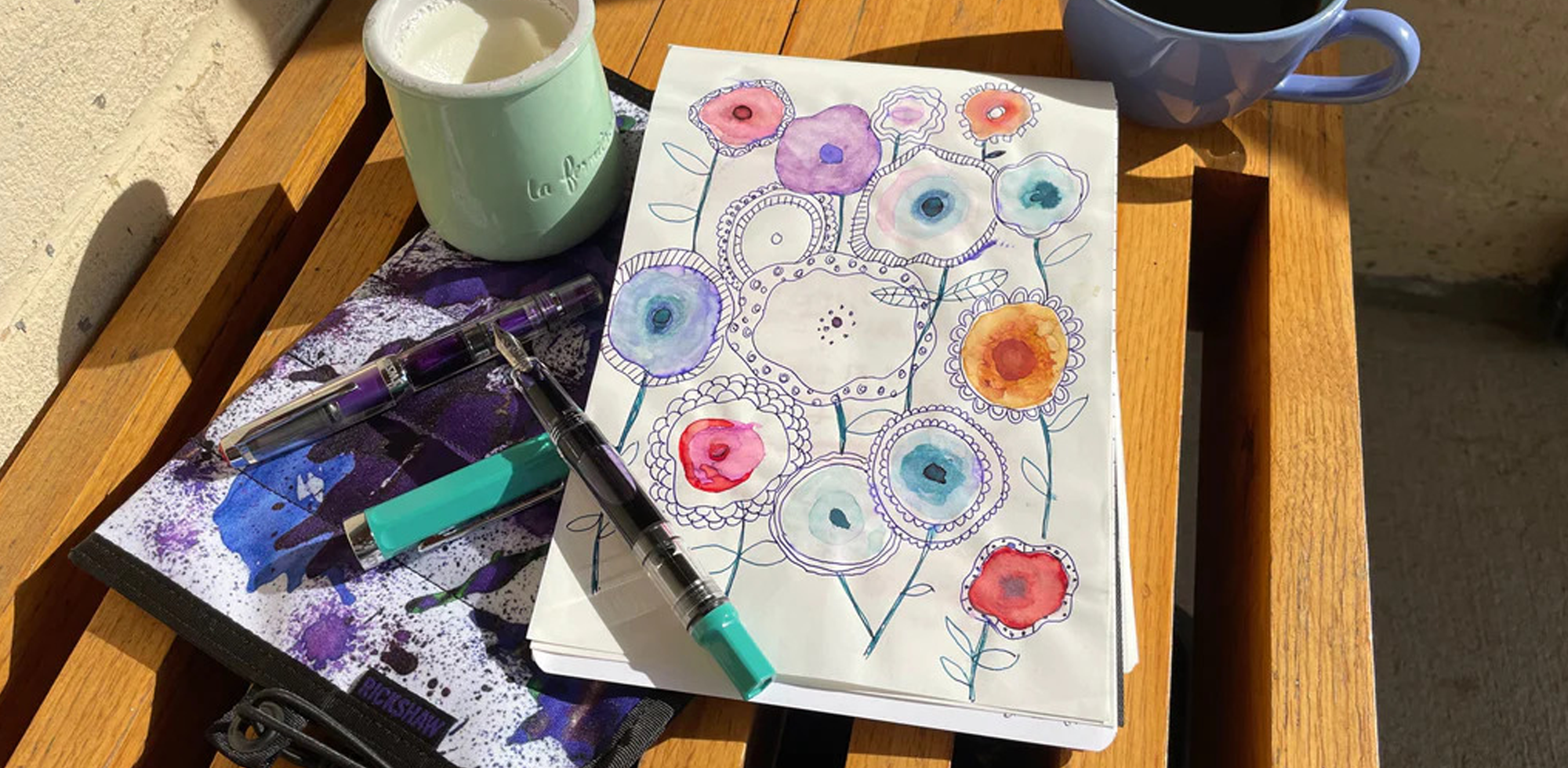
I'm writing this blog article today as the pilot episode of my new YouTube show with Leila makes its premiere, and, to be honest, I'm feeling very angsty about it. I keep telling myself I should be happy and excited, because I know starting a YouTube show for Pen Boutique is a big deal, and it's something that took a long time to reach its fruition. I love working with Leila, and I think "For Your Penjoyment" is very special. We have great chemistry, and, most importantly, we are both genuinely enthusiastic about the world of fountain pens and our paths of discovery. We love sharing our joy with others. As with anything new, we have a few kinks to work out, but we know the show will get better and better with time, and we already have a myriad of ideas for interviews with brand representatives, regular features, and ways to keep things fun and fresh.
It's hard to even articulate why I feel vulnerable and sad. I wish today could just be positive and celebratory, but it's scary, and I'm full of so many mixed emotions. I just need to get through them, I guess. That's part of life and part of being human. Co-hosting a YouTube show is something that I never in a million years could have imagined myself doing. When I was a young girl, I was so shy, even having to go up to a counter at a store to speak to a salesperson was terrifying to me. Now I am a salesperson and Internet influencer, people love speaking with me, I'm recognized at pen shows, and I get positive feedback regularly. Doing this show could be a very big step for me. But some of the people I love most and most wish I could share this with are gone, and I can't show them how far I've come. I keep thinking about my dad, who died this March, and how proud he would be. I wish I could show him our first episode. It definitely helps to have new people, including readers like you, to share my journey with. No one can replace the loved ones I've lost, but forming new relationships is kind of like starting a pen collection. You never know where it will take you.
Speaking of which, one of the subjects Leila and I discussed in our introductory episode is how we each came to collecting fountain pens. I've long thought that would also be an interesting topic for this blog, so today I'm going to expand a little on what I said in the show, and share with you some of the pens that brought me to where I am today. If you watched the episode, you might notice that my story in this article is slightly different from the one I told in the show. I didn't remember all the details completely accurately as I was spontaneously reminiscing, but, while I was writing this, I was able to go back and look at documents that helped me remember the route I took when I was brand new to the world of fountain pens.
The Path to the Pen
As I explained in the show, it's kind of a weird and circuitous story. Back in 2013, I got obsessed with the movie Pandaemonium, starring Linus Roache as Samuel Taylor Coleridge, who was a poet, philosopher, essayist, and one of the founders of the Romanticism movement in England in the late 1700s. I was heavily influenced by Romanticism when I first began to develop my writing style as a teenager, and watching this movie rekindled my love of the literary style, with its emphasis on emotion, individualism, and nature. Coleridge (or STC, as I liked to call him) was a neurotic and sensitive soul, an opium addict, charming, sweet, brilliant, and wildly imaginative. He wrote the famous poems The Rime of the Ancient Mariner and Kubla Khan. The movie is highly fictionalized, a bit psychedelic, and kind of crazy, and it was exactly what I needed at that point in my life. I fell in love with it and watched it over and over. I told my niece about it, made her watch it, and talked to her about it constantly. So, for Christmas in 2014, she gave me a quill dip pen, similar to the feather pen Coleridge uses in the movie while feverishly scribbling his poetry. I told this story to Leila on the show, and she was highly amused and delighted.

I loved the quill pen. It's one of the most wonderful gifts I've ever received, because my niece understood what I was most excited about and knew it would inspire me and bring me delight. I didn't write with it a lot, but I drew a little, tried to copy some of Coleridge's poetry, and used it to write my Christmas cards. I found that I really enjoyed the experience of the ink, how different my handwriting looked, and how creative and freeing it felt to use a nib instead of a regular rollerball or felt tip pen like I had used in the past. I wrote to my niece, "I really like how it doesn't hurt my hand, unlike a normal pen... because I grip a normal pen really tightly, I mean. And this is a much lighter, flowing kind of thing."
 (The first photo I took of my new pen!)
(The first photo I took of my new pen!)
 (Prototype Laura's Inky Fingers.)
(Prototype Laura's Inky Fingers.)
 (Drawing of my niece using the quill. I definitely captured her!)
(Drawing of my niece using the quill. I definitely captured her!)
Later, I fell in love with fountain pens for the same reason. I instruct new fountain pen users not to press down at all, but to just allow their hands to glide over the paper. I still grip my pens too tightly, but using fountain pens has helped me relax significantly, and the smooth feeling of using the pen can help your thoughts to flow freely, as well. Last year, a Pultizer-prize winning author came into the store and purchased a large number of Platinum Preppy pens to give out to students in a university-level writing class she was teaching. She told me that using a fountain pen completely changed their writing style and made them much more creative.
My First Fountain Pen
After a few years of playing around with my quill, I finally decided to get my first fountain pen after I became friends with an older gentleman I met at a Met: Live in HD opera transmission in my local movie theatre. We became pen-pals, and Will used fountain pens to write his letters to me. I loved receiving the letters in my mailbox, written on heavy cream-colored paper with one of his vintage pens, including several Eversharps. He usually used black or blue ink, but occasionally it would be green, and later I gave him some Waterman Tender Purple, which he loved. His handwriting could be a little hard for me to interpret sometimes, but it made the experience of reading his letters so much more personal and special. The content was already interesting, but the fountain pen added something that elevated the exchange to a whole other level.

At first, I wrote back long handwritten letters using a Sharpie, but, after several months, I fell for the allure of the fountain pen. At that point, I had been thinking about getting a fountain pen for several years, but I was a little intimidated by the idea. It seemed like such a big decision, and getting a pen that cost $15 seemed so expensive! Looking back on that, now that I work in a fountain pen store where pens can cost anywhere from $6 to $15,000, it sounds silly, but it really isn't. $15 is a lot of money for a pen, when you are used to buying disposable ones. But, as I immediately discovered, the pen was worth it.
After quite a bit of research, the pen I selected for my first fountain pen was a medium nib black Pilot Metropolitan. I wanted it to look serious and classic, and, at the time, I imagined it would be my one and only fountain pen. (Again, looking back, the idea of having only one fountain pen seems crazy now, but it was a reasonable assumption to make. Little did I know how irresistible fountain pens are, once you've gotten a taste, or how important pens would later become in my life!) The closest fountain pen store to me was over three hours away, so I ordered it online. November 18, 2018 was the day I got my first fountain pen, and I fell in love immediately.

As soon as it came, I opened the box and tried it out. I knew my nephew also had a fountain pen, although I had never seen his, so I messaged him, "My new fountain pen came! Do I need to do anything special after I use it (with an ink cartridge) or can I just put the cap on and use it more later?" He replied, "Just put the cap on!" This is extremely amusing to me now, but it's a legitimate question. My only experience was with a dip pen that I had to clean carefully after each use, so I was concerned about the nib staying inky, and wondered if I needed to wipe it so the ink wouldn't build up too much. My nephew told me the ink wasn't harming anything, so I happily stopped worrying and jumped down the rabbit hole, but not before reporting, "I like how it feels!!!"
It's important to remember, when you introduce someone to fountain pens for the first time, that there are many things about using a fountain pen that are very different and might seem a little scary. There are no silly questions. Learning how to fill your pen, hold your pen, clean your pen, choose your ink and your paper are all important, and it's great to have a mentor, a friendly fountain pen store (like Pen Boutique!) that welcomes questions, and/or guidance from videos and discussion groups on the Internet. I definitely learned a lot from videos and the fountain pens group on Reddit when I was new.
My beloved black Metropolitan, who I later named Horace (because he was my workhorse pen) was the perfect first pen for me, and, right away, I started using fountain pens almost exclusively. My new pen was so much more comfortable and easy to control than the quill, and fun to use. Using a nice pen made even mundane things like writing to-do lists and birthday cards feel special and much more enjoyable. Plus, it wrote with a smooth, beautiful line that made my handwriting look much more expressive than it did with a felt tip or rollerball, and it didn't tire my hand. That was great for my 10-page letters to Will. (I already hated ballpoints, so I never used one unless it was absolutely necessary.) A few days after I got my Metropolitan, I wrote to Will with it, telling him that it was my first time using the pen other than trying it out when it arrived.
 (I don't use Horace that much anymore, but I decided to ink him up today with Pilot Iroshizuku Ku-Jaku, the first big bottle of ink I ever bought. I'd forgotten just how smooth a writer he is and how good a combination they are together! What a great pen and ink.)
(I don't use Horace that much anymore, but I decided to ink him up today with Pilot Iroshizuku Ku-Jaku, the first big bottle of ink I ever bought. I'd forgotten just how smooth a writer he is and how good a combination they are together! What a great pen and ink.)
Exploring Nibs and Inks
In my next letter, I talked about the new, more expensive, pen with a flexible nib that I had picked out for Christmas. Will's vintage pens had very flexible nibs, and I loved the look of the line variation in his writing, so I wanted to experience this, too. After a little research, I learned that most modern flexible nibs can't compare with vintage ones, but the Pilot Falcon's semi-flex nib is a good place to start. So, I jumped straight from a beginner pen to a 14k gold nib pen with an unusual nib, which may have been slightly too big of a leap, but I never regretted buying my Falcon.

This pen's nib's unique shape allows the tines to be more flexible, which creates line variation when you change your writing pressure. Although this nib isn't as flexible as a vintage flex nib, it's a lot easier to control and performs very consistently once you get used to the feel. It took me a little while to get the hang of writing with the Falcon, and it probably would have been better if I'd gotten experience with a few more regular nibs first, but, once I did, I loved it. I chose a fine nib, which, as I had learned from reviews online, allows the greatest amount of line variation between when you write with a light touch and when you gently flex the nib, without the nib feeling too fine and scratchy.
Later when I was able to compare all the different Falcon nib choices in our store, I was gratified that I had been guided correctly and indeed chosen wisely. For me, the extra fine nib feels a little too extreme, but fine really gives an interesting and distinctive look to my writing. Medium and broad feel smoother, but there isn't as much line variation, so you aren't getting as much bang for your buck. I later tried many other modern flexible nibs, and I still think the Pilot Falcon's is the best one to get first. For me, steel flex nibs don't feel flexible enough, and very flexible nibs like Pilot's FA nib (available on the Pilot Custom 912 and Pilot Custom 743), while thrilling to use, are too hard to control until you are much more experienced with a fountain pen. To flex the Falcon's nib, you have to be deliberate, but it feels natural, not forced. It's a wonderful pen.

I especially liked to write cards with my Falcon and show off rich inks with lots of sheen, like Pilot Iroshizuku Yama-Budo, Diamine Majestic Blue, Diamine Sargasso Sea, Diamine Regency Blue, Lamy Crystal Azurite, Diamine Scribble Purple, Diamine Monboddo's Hat, Colorverse Andromeda, Colorverse Supernova, Sailor Manyo Akebi, Sailor Shikiori Oku-Yama, Colorverse Crab Nebula, 3 Oysters Delicious Marine Green, 3 Oysters Delicious Peacock Blue, Kobe #2 Wharf Blue, Waterman Tender Purple, Sailor Delaware, and Sailor Virginia.
When I bought my Falcon, it only came in black, with a choice of rhodium plated or gold plated trim, but now it's also available in a lovely deep Red, a gorgeous shade of azure called Marine Blue, and the equally beautiful Plum Purple. The slightly more expensive metal version of the Falcon comes in sophisticated shades of Brown, Burgundy, and Sapphire as well as Black. Falcon's flat cap and sleek, polished body have a timeless look. Both versions of the Falcon are wonderful, and I highly recommend Falcon when you want to try a high-quality pen that will take your writing to the next level without stretching your budget too much. The resin Falcon that I bought is especially approachable. Who am I kidding, I probably still would have gotten black even if those other colors had been an option, but I do love the bright blue and the purple...
 (Pictured: Plum Purple Falcon, Sapphire Metal Falcon, and my own rhodium plated Black Falcon, on my orange Girologio mat, with my Iroshizuku Murasaki Shikibu ink bottle and one of my favorite papers to use when writing letters, Clairefontaine Triomphe. I used this pad of paper for many of my letters to Will.)
(Pictured: Plum Purple Falcon, Sapphire Metal Falcon, and my own rhodium plated Black Falcon, on my orange Girologio mat, with my Iroshizuku Murasaki Shikibu ink bottle and one of my favorite papers to use when writing letters, Clairefontaine Triomphe. I used this pad of paper for many of my letters to Will.)
Soon, I was writing to Will with four or five different inks in each letter, switching off between pens mid-sentence as my collection of both inks and pens rapidly expanded. I loved to tell him about the inks and pens I was using, and he was amazed by all the beautiful colors. My first ink bottles were a set of Pilot Iroshizuku colors, and Iroshizuku is still one of my favorite ink brands and the one I most highly recommend. The inks are a little more expensive than some other brands, but they are worth it because they are so well-behaved and have such stunning colors. I especially recommend using Iroshizuku to get the very best performance out of your Pilot pens, but other brand pens will appreciate these lovely, wet, smooth inks, as well. Last year, Pilot newly released the Iroshizuku inks in cartridge format, which is very convenient if you want to refill your pen on the fly without having to worry about bottles. These cartridges are proprietary, so they'll only work with Pilot pens, but once I discovered how much I love Pilots, I bought more and more different models, so they all share ink freely.
Getting Elite
At first, all my pens were Pilots. My next one, only a month after the Falcon, was a 14k gold medium nib E95s in burgundy and ivory, and I loved that pen so much that I soon bought a "new old stock" silver crosshatched vintage Pilot Elite with an 18k fine nib, and a black Elite in 14k extra fine. (Elite is the Japanese name for the E95s. They are the same pen, but one says "Elite" on the cap and the other just has an "E.") This pen design was introduced by Pilot in 1968, and has barely changed at all over the years. My vintage pen from the 1970s uses the same cartridges as a modern Pilot, and the three make a great trio. I love using each one for different purposes, depending on how precisely I want to write or draw, and what kind of ink I want to use. The inlaid nib on the E95s/Elite is buttery smooth, and I still think my medium E95s is the smoothest writing pen I own.
The E95s/Elite is a pocket pen, so it's very compact when capped, but extends to an extremely comfortable length when the cap is posted on the back of the pen. I love the vintage look of this pen, and how different it is from other popular pen models of today. The burgundy and ivory color combination is especially unusual and special. I just think this pen looks elegant and cool.
The Value of Learning About Vintage
As my collection grew, I experimented with a stub nib, a broad, a double broad, and several more mediums. Soon, my pen tray began to overflow, but, as I related on our YouTube show, my collection expanded exponentially in the summer of 2019 when Will decided to give me a wooden box filled with about 50 vintage fountain pens that he had collected over the years at thrift shops, antique stores, and tag sales. (That may be called a "garage sale" or "yard sale" where you live, but in Connecticut they are "tag sales!") Will had favorite pens that he used regularly (all vintage), but these were ones that he never used, and he decided he didn't need them anymore. He said I could do whatever I wanted with them. A few of the pens were valuable, some of them were broken junkers, some were popular classics of their age like Esterbrook J Pens and Parker 51s, and some were unusual and interesting.
My only vintage pen up to that point was my silver crosshatched Pilot Elite, which I didn't really even think of as vintage, as it was unused when I got it, and it worked exactly the same as my modern Pilots. These pens were completely unfamiliar, and most of them had names, shapes, and filling mechanisms that were entirely new to me! I was both excited and overwhelmed. But, I knew what to do. I went on the Fountain Pens subreddit and posted a photo of all the pens laid out, and the extremely helpful and knowledgeable people there helped me identify nearly all of them. I knew almost right away that I didn't want to keep them all, and that that was okay. It was too much, and I don't like having so much stuff. Aided by the Reddit group's advice, I sorted through all the pens and figured out which ones were worth keeping, then narrowed them down to my favorites.

Having these pens, even though I only chose about ten favorites to focus on, taught me a lot about fountain pens. Almost all the pens were incredibly dirty, with ink that had been dried on for decades, so first I had to figure out how to carefully disassemble and clean them. I got my first experience with the various styles of piston-fillers, with lever fillers, and with squeeze fillers. Almost none of the pens used cartridges. I travelled by car, train, and Subway to my nearest fountain pen store, the Fountain Pen Hospital in lower Manhattan, so that I could ask them about some of the pens and buy supplies to restore my favorites, some of which needed replacement rubber sacs. I learned about historical brands that aren't around anymore (such as the budget brand Wearever), or that have merged with modern brands (like E. Faber, which is now part of Faber-Castell). The brands included Sheaffer, Waterman, Mabie Todd, Remington, Conklin, and Tombow. My chosen pens were an E. Faber, several Esterbrooks and Eversharps, Parkers, and a pretty little Art Deco looking rose-colored marbled lever-filler that said on the side, "The Unique Pen, Made in England."

I realized over time that I'm not really into vintage pens, and I ended up eventually selling almost all of them, but my appreciation and knowledge of fountain pens expanded in ways that never would have been possible if Will hadn't given me the opportunity to explore those pens and learn about them. I still have The Unique Pen, of course. I used it for inspiration the day I went for my job interview at Pen Boutique. And, guess what... I got the job!

Branching Out
As summer 2019 drew to a close, all my pens, except for the vintage ones that Will had given me, were still Pilots, but, in September, I came across an article about the first non-Pilot pen that I couldn't resist. It was the Otto Hutt Design 04. I could hardly find any reviews of it or references to it in the online pen forums, but the reviews that I did see talked about the incredible craftsmanship of this brand, which was founded in Pforzheim, Germany in 1920 and has maintained its Bauhaus aesthetic and jewelry-makers' precision. I fell in love with that pen's curves and angles, and thought about it constantly. It was more expensive than any of my other pens, and I couldn't find any US pen stores that carried it, but I decided that I really wanted it for Christmas, so I ordered it from a place in Sweden and waited patiently for it to arrive. When I opened it that Christmas, I immediately started using it to draw and discovered that the precise feel of the nib and the perfect balance in my hand were ideal for sketching. (The people in my silly picture were supposed to be a couple of my relatives, but only loosely!) Design 04's slightly toothy steel nib is extremely smooth and quite wet, and the pen is also available with a gold nib if you want a softer feel and even wetter ink flow.

I also used my Design 04 and a rock from a Kindness Rocks garden near my old house in Connecticut for encouragement before I went for my Pen Boutique job interview.
 The Floral Creme Design 04 isn't available anymore, but we carry other Design 04 pens and I still love the grace and poise of the Bauhaus design. My favorite is the Wave pattern, which is even more beautiful than my pen. The thin threads in the Wave design appear simultaneously random and harmonious. I especially love the way the light catches the design in the barrel.
The Floral Creme Design 04 isn't available anymore, but we carry other Design 04 pens and I still love the grace and poise of the Bauhaus design. My favorite is the Wave pattern, which is even more beautiful than my pen. The thin threads in the Wave design appear simultaneously random and harmonious. I especially love the way the light catches the design in the barrel.


I borrowed a Black Rose Wave for this article after Leila and I discussed the question of what pen in the store we think best represents each of us. For me, we picked this pen.
Reaching Further - Omas
About a year later, in January 2021, I decided I wanted to get an Omas pen, because I read about how special the nibs are. (Some sources I read called them "unparalleled.") Omas is an Italian brand that was founded in 1925, and was very, very respected, but they went out of business in 2016. I learned that Omas pens were still extremely desirable, and looked for one on eBay. Most of the pens I saw were gorgeous, but out of my price range, until I found an elegant little Omas Dama from the 1990s for under $200. It's a very petite pen, plain black, with a classic Omas faceted shape, a Greek key design on the ring and a smooth and precise 14k gold fine nib. 
Because the nib is so small, it's actually pretty stiff, so, although I love my beautiful little pen, I didn't really experience the feel that made Omas nibs so famous until very recently. The company has restarted, and we received a few Omas pens in the store to see how customers will respond to them. I am very excited to try them, and spoke with the new Omas brand ambassador over Zoom to get the scoop on the pens he had sent us.
We currently have the Ogiva and the Paragon models, and both are gorgeous. The tapered Ogiva (pronounced "O-gee-va") is made from acrylic resin crafted in Italy, while the twelve-faceted Paragon is celluloid. Both have beautiful roller-style clips. Vintage Paragon pens came in Saft Green, London Smoke, Blue Royale, and Scarlet, and one of the pens we received is the Blue Royale. It is made from one of Omas' original celluloid rods.

All the Omas pens have ebonite feeds, 14k gold nibs, and a piston filling mechanism that has been upgraded to brass. The pens' collars have also been improved, as the old ones occasionally had an issue with cracking.
Most importantly, the new Omas pens' nibs are being manufactured to the exact specs of the originals. Their curvature, flex pattern, and the polish on the iridium tip is the same. The way a nib's iridium tip is polished controls the feel of the pen on the paper, so it's very important to the character of the pen. For example, it's what gives Sailor nibs that feeling of "feedback" they are so famous for. But unlike Sailor nibs, Omas nibs are designed to be hyper smooth.
I decided to dip test one of the Ogiva pens so I could see for myself, and I was impressed. The medium nib is, indeed, deliciously smooth, but also gave me a feel for the paper below. And something about the nib's shape provides a delightful bounce and allows it to flex slightly under gentle pressure. It's wonderful, and, days later, I can't stop thinking about it and longing to experience it again. The only nib I have tried that even compares is the one on the Pelikan M1000 (which I also adore), but that's a huge 18k gold nib, and its flexibility comes from its size and the softness of the gold. The Omas nib's exceptional feel comes from its design.
 I am excited about the new Omas pens, and quite curious to see how the brand will do. I hope Omas is around for a long, long time.
I am excited about the new Omas pens, and quite curious to see how the brand will do. I hope Omas is around for a long, long time.
Starting My Flock
Speaking of Pelikans, I will finish my story by telling you about my first Pelikan. When I decided to sell some of the vintage pens I didn't want to keep, I got in touch with the eBay seller I had purchased my Omas Dama from, and he agreed to buy them from me for a very fair price. He was an experienced vintage pen seller and buyer with excellent feedback, and also very kind. I got about $500 from the first group of pens I sold him, and decided that I would use the money to choose a special pen that I really wanted and buy it.
I had become a very big fan of the incredible Mountain of Ink blog, and consulted it constantly. I love Kelli's thorough ink reviews, and I still check out Mountain of Ink every time I consider trying an ink. As I regularly read the blog, I'd started to notice every time Kelli used one of her Pelikans in her ink tests, especially the Pelikan M400 White Tortoise and Violet & White M600. I just loved the way the pens looked. It was a big decision for me, though. I was nervous about trying a Pelikan and read a lot about them before I finally decided to do it. Finally I decided that I would get a White Tortoise and my first custom ground nib. The White Tortoise model was difficult to find at that point, but nibmeister John Mottishaw had some, and, after much consideration, I requested a broad stub. The pen arrived on the afternoon of February 5th, 2021.


I was scared to try it when I first opened the package. It was so beautiful.
But, after a little encouragement, I did.

I misspelled Pelikan, but that's okay.
This pen is very, very dear to me, in ways that are deeper than I can say.
That was the end of my fountain pen journey for a while, but then I started a new journey at Pen Boutique in November, 2021 and learned about many, many more pen brands and added a lot more variety to my collection. I love Pelikan pens even more now, and my little flock has two special pens. I got the second one, the Petrol-Marbled M205, as a birthday present for myself, a few months after I started working at the store. You probably read about that pen in last week's blog article about Pelikans.

Since last week, we have received four more beautiful Pelikans at the store: the Rose Quartz M205, the Art Collection Glauco Cambon M600, and two additional retired M800s: Ocean Swirl and Renaissance. I just checked, and both retired pens have sold out already. I'm not surprised. They are both breathtaking, and whoever snagged them is very lucky! We still have some of our other retired Pelikans left, but in very limited quantities, so be sure to check them out if you love Pelikans like I do. I missed my chance to get the Ocean Swirl, but I also haven't been able to stop thinking about the Glauco Cambon since our Pelikan representative, Gary, showed it to me at the DC Pen Show. The Glauco Cambon is more expensive than any of my other pens, but I am seriously considering buying one. I love it. Will I add a third bird to my flock? I don't know yet. Maybe. Who knows where my journey will take me?
-Laura P.
I love comments on my blog! Please leave comments if you like the articles, and, if you have any questions about this article, or any of the other blog articles, you can e-mail support@penboutique.com. Thank you!


